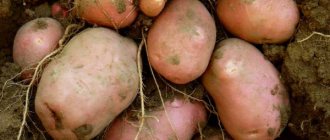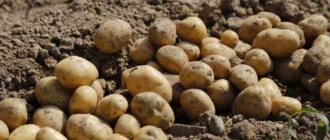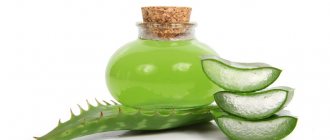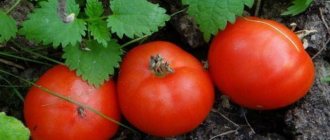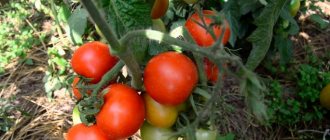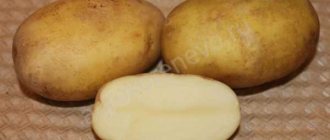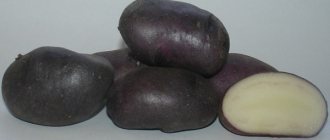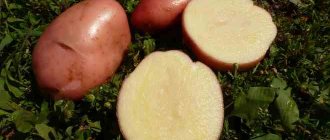Kuzbass potatoes are so good that they started to counterfeit them
Why is it important to purchase seed material from the originators for a rich harvest
? 04/30/2019 at 12:02 p.m.
Spring field work in Kuzbass began ahead of schedule. At the beginning of May, potato planting begins. And this is not the time for experiments - the stakes are too high, especially for large farms that cannot afford to lose money on buying low-quality seed material. Properly selected seeds will be able to resist viruses and diseases and can easily withstand the weather surprises of the Kuzbass climate. This means they will provide a decent harvest and a good income for the owners. You can purchase high-quality seed potatoes from the so-called originators - creators and keepers of standard varieties, namely at the Kemerovo Research Institute of Agriculture.
Only the original can be better than the original
The Kemerovo Agricultural Research Institute has been engaged in potato selection and original seed production for more than 50 years. The first variety was registered here in 1956. Today, the collection of the Kemerovo Research Institute of Agriculture includes nine popular potato varieties throughout the country, five of which are included in the State Register. These are Lyubava, Tuleevsky, Kemerovo, Kuznechanka and Tanay. They are distinguished by high yield, shelf life (stored for a long time), non-hollowness (no voids inside the tubers), resistance to diseases and high taste and culinary properties.
“It is very important that potato varieties are zoned,” explained Vera Khodaeva, senior researcher at the Laboratory of Potato Breeding, Biotechnology and Agricultural Technology at the Kemerovo Research Institute of Agriculture. – They are better adapted to local conditions than those brought from other regions and especially countries. Unregistered varieties reduce their productivity and disease resistance within a year or two.”
Also, high-quality seed material must be disinfected and cleared of viral infections. “If farms purchase planting potatoes from us, we guarantee that they will not bring in any concomitant infections,” noted Vera Petrovna. – Unlike foreign ones, with whom terrible quarantine diseases are often imported. One of them is the golden potato nematode. If a field is planted with infected seeds, in July during flowering this infection will wipe it out completely. And then for decades it will be impossible to grow potatoes on this site. By the way, our Udalets variety is famous for the fact that it can grow in contaminated areas and even has cleaning properties.”
The Kemerovo Research Institute of Agriculture is seeking to improve the health of its seed material thanks to the method of microclonal cuttings, for which the institute recently purchased a new aeroponic installation. This is the reproduction of tubers according to a special scheme - by dividing one cell. “Do not confuse this with cloning,” Vera Petrovna noted prudently. – This is not a dubbing, we do not meddle with the genetics of the variety and do not receive genetically modified products. We reproduce at the cellular level, in vitro. First, we isolate a cell from the tuber. We suppress various viruses and infections in this cell. Then we germinate the sprout in a test tube. Having repeatedly checked this sprout for various types of damage, we begin to take cuttings and grow it again in a nutrient medium. One such cell can produce up to two thousand sprouts. After they take root and become full-fledged plants, we plant them in peat pots for growing. Thanks to the new installation, we will be able to do this all year round, and not just in the summer in the greenhouse. Thus, all potato varieties are cured from viral and bacterial latent infections. Such varieties can retain their properties and provide a decent harvest for up to 3-4 years.”
Scientists manage to grow not only internally healthy tubers, but also produce tops that are not affected by pests. The people are of the opinion that if a beetle does not eat, then the plant is harmful to humans. But, as Vera Petrovna explained to us, the reason for the preservation of the green part of the plant is completely different. “These varieties have “fluffy” leaves with long hairs. Therefore, the insects simply cannot catch on to the leaf and fall off,” the interlocutor explained.
Article on the topic: Potato variety “Nakra” - description and photo
It takes about 10-11 years to create each variety, but if not properly maintained, it degenerates many times faster. Literally 3-4 years - and the tubers accumulate viruses, diseases, lose their shape, and the yield declines. And only on a scientific basis by breeders and seed growers can it be maintained at its original level. Therefore, it is so important to purchase original varieties, not reproductions, and periodically update the variety base.
“Recently, unscrupulous sellers have begun to appear who pass off mass reproductions as our elite material,” said Alexey Chernysh, director of the Kemerovo Research Institute of Agriculture. – It got to the point that our popular potato varieties, in particular Tuleyevsky, began to be counterfeited. It is grown in 22 regions of our country and is zoned into three zones. People call us from all over Russia and tell us that they ordered our Tuleyevsky from some company, but the result is who knows what. They ask questions about what it should be like, and ask to send a couple of tubers for comparison. They sell everything under the name of our brand. I would like to draw the attention of potato growers: the sale of original varieties to both individuals and farms is carried out only through us. And those farms that have entered into non-exclusive licensing agreements with research institutes have the right to sell our elite category varieties, subject to presentation of quality certificates, but their reproduction will be lower than our super super elite. Everything else is a fake or counterfeit.”
Kuzbass standard
All potato varieties bred at the Kemerovo Research Institute of Agriculture have diplomas and gold medals of the highest degree. And the Kemerovochanin variety was even recognized as the standard of regional yield, which is the main requirement in the state variety testing. The variety that performs best over the years is used as the standard against which other varieties are compared.
The entire collection of the Kemerovo Research Institute of Agriculture is constantly tested for taste and culinary qualities. Independent experts are invited for tasting, who evaluate the harvest twice a year after its collection and storage.
The research institute is open to agricultural producers who can personally monitor the process of production and storage of seed potatoes at any stage. “Farmers often visit our storage facilities and see that we comply with all regulatory requirements from temperature conditions to embankment,” explained Vera Khodaeva. “They also come to the fields where they see flowering, healthy bushes.”
Every year, the Kemerovo Research Institute of Agriculture sells about 150 tons of seed potatoes of original varieties. “We are going to increase the declared volumes, as demand begins to exceed supply,” noted Alexey Chernysh. – This is planned to be done by improving growing technologies and developing new varieties. We are purposefully working to create seed material for agricultural producers so that they can obtain marketable potatoes of the highest quality. For many years now, our seed potatoes have been purchased by both owners of private farmsteads and Kuzbass farms - “Beregovoy”, “Vesna”, “Khutor”, “Bacon” and others. Thanks to his high qualities, he is actively moving beyond our region to Novosibirsk, Tomsk, Altai Territory, Khakassia and even Samara, Tyumen, Nizhny Novgorod and other regions. Requests come from everywhere. If we could send out seed potatoes by mail, there would be no shortage of people wanting to buy them. But for now this issue is under development. However, some enterprises have found a way out - they order the services of transport companies and export high-quality seed material from our institute in large quantities.”
Employees of the Kemerovo Research Institute of Agriculture are ready to orient anyone who applies to the variety of varieties and advise on cultivation technologies. And in the fall, when the harvest begins, the institute will be able to purchase commercial table potatoes, free of nitrates and heavy metals.
Varieties bred at the Kemerovo Research Institute of Agriculture
LYUBAVA (state register) is an early salad-type variety. The tubers are red, the flesh is white. Productivity up to 55 t/ha. Marketability 90-96%. Starch content 12-16%. Resistant to potato canker, relatively resistant to late blight, common scab, and rhizoctonia. Weakly susceptible to Alternaria blight. It has high keeping quality and yield of early potatoes (maximum irrigated 60 t/ha). Differs in multituberism. In 2000, the seedling culture produced 56 tubers from one bush. Sensitive to soil fertility.
Article on the topic: Potato variety “Connect” - description and photo
UDALETS – mid-early variety. The tubers are white, the flesh is white. Productivity up to 60 t/ha. Marketability 86-91%. Starch content 13-15%. Relatively resistant to late blight, common scab, and Alternaria. It is weakly affected by the golden potato nematode and has the ability to clear the soil of the nematode.
TANAY (state register) – mid-early variety. The tubers are yellow, the skin is slightly reticulated, the flesh is yellow. Productivity up to 35-50 t/ha, maximum yield – 63.2 t/ha. Marketability 92-98%. Starch content 13-16%. Moderately susceptible to late blight and viruses. Resistant to cancer and golden potato nematode, drought-resistant, resistant to mechanical damage. Good taste.
KEMEROVCHANIN (state register) – mid-early variety. The tubers are yellow, the flesh is yellow. Productivity 30-34 t/ha, maximum yield – 58 t/ha. Starch content 17.5%. Marketability – 90-99%. Average resistance to late blight. Resistant to cancer, golden potato nematode, viruses, Fusarium wilt and Alternaria, resistant to mechanical damage, high shelf life.
MARIINSKY – mid-early variety. The tubers are red, the flesh is creamy. Starch content 14-16%. Productivity 35-45 t/ha. The taste is good. Resistant to golden potato nematode. Relatively resistant to viruses, late blight, and common scab.
TULEEVSKY (state register) – mid-early variety. The color of the tubers and pulp is yellow. Productivity up to 45-55 t/ha. Marketability 88-99%. Starch content 12-15%. Cancer resistant. Relatively resistant to late blight, scab, and alternaria. Not resistant to golden potato nematode. Excellent taste, high stable yield.
KUZNECHANKA (state register) – mid-early variety. The tuber is red, the flesh is white. Starch content 12.5-16.3%. Productivity up to 45-55 t/ha. Marketability 93-97%. Relatively resistant to viruses, late blight, and common scab. Suitable for processing into crispy potatoes. The maximum yield was achieved - 104.2 t/ha.
NAKRA is a mid-season variety of universal use. The tubers are red, the flesh is light yellow. Productivity up to 30-45 t/ha. Starch content 17-24%. Resistant to cancer and scab. Relatively resistant to late blight and viruses, high resistance to common scab. Weakly affected by the Colorado potato beetle. Suitable for making crispy potatoes.
For questions regarding the purchase of super-super elite seed potatoes of zoned varieties, call 60-45-22, 8-951-226-1544.
The same potato varieties (Kratop, Gala, Arosa and Adretta) in 2020
In the second year, the varieties began to show themselves more clearly, apparently acclimatized.
Adretta. I noticed its varietal feature - a fast race in the spring. It sprouted earlier than anyone else and grew more actively than anyone else. Her tops were the tallest and fluffiest. I thought the harvest would be excellent, not like last year. But alas, the potatoes are still small and the harvest is mediocre.
Here is the Adretta harvest from two bushes
Karatop. When I wrote in the article that Karatop could not be distinguished from Gala, the comments were perplexed: “How so? After all, Karatop is early, and Gala is average. These are completely different varieties!” This year I saw that Karatop is really early. Its tops began to turn yellow before anyone else. The potatoes are also small. Moderately crumbly when cooked.
Potato Karatop
Gala. I completely lost it, forgot to write down in my notebook where I planted it. I dug up some nameless variety from under the fence, thinking that I planted the remains of the main one there. He is also white. Today we only realized by deduction that this is Gala. There won't be a photo because it's already in the cellar.
Gala’s tops turned yellow almost simultaneously with Karatop’s. They were the first to be removed from the garden. So in this regard they are again similar. But Gala’s tubers are larger this year. That is, Gala wins over Karatop in terms of yield, but is inferior to it in the pan - it does not crumble at all, although it is not soap, the consistency is delicate and pleasant.
Arosa. This year she has moved even closer to Adretta. For me it’s like girlfriends, only one is blonde (Adretta is white) and the other is brunette (Arosa is red). The yield of Arosa this year is also low, the tubers are not large, they are just as badly affected by scab as those of Adretta, but they are invariably tasty and crumbly.
Arosa is now born small
There is a difference, except for the color of the tubers - Arosa's bushes are low and compact, while Adretta's, on the contrary, are wildly growing.
Arosa harvest 2020
There is also a variety with a consonant name - Azora. She didn't grow it.
By the way! Karatop and Arosa allow me to harvest two crops per season from one plot .
Potato variety "Tanai" - description and photo
VNIOPTUSH - a branch of the Federal State Budgetary Institution FSC VNIIESKH announces the holding on October 24-25, 2021 of the Second International Scientific and Practical Conference “Agricultural Economics in the Conditions of Globalization and Integration” (AGEGI 2019).
VIAPI named after A.A. Nikonov-branch of FGBNU FSC VNIIESKh, Free Economic Society of Russia, economic, geographical faculties and faculty of soil science of Moscow State University named after M.V. Lomonosov invite you to take part in the XXIV Nikon Readings of the International Scientific and Practical Conference “Rural territories in the spatial development of the country: potential, problems, prospects.”
On October 17-18, 2021, an international scientific and practical conference “scientific and technological development of the agricultural sector of the country’s economy in the context of global challenges and threats” will be held in the hall of the Academic Council of the Federal State Budgetary Institution FSC VNIIESKh.
Brief information about the result of scientific and technical activities obtained by the institute of the Russian Agricultural Academy
Type of result: Selection achievement
Result name: Potato variety Tanay
Brief description of the result: The variety is of the mid-early ripeness group. Table purpose. Potential yield up to 50 t/ha. The weight of the commercial tuber is 100-180 g. The starch content is 13-16%. The taste is good. Medium height plant. The color of the flowers is white. The color of the tubers and pulp is yellow, round-oval, the eyes are of medium size. Moderately susceptible to late blight and viruses. Resistant to cancer and potato nematode. Responds positively to irrigation.
Developer: GNU Kemerovo Research Institute of Agriculture of the Russian Agricultural Academy
Authors: Anoshkina Lyubov Sergeevna, Vershinina Yulia Alekseevna, Gorshkova Anna Nikolaevna, Lapshinov Nikolay Alekseevich, Kulikova Valentina Ivanovna, Ryabtseva Tatyana Vasilievna, Khodaeva Vera Petrovna
Address: 650510, Kemerovo region, Kemerovo district, p/o New building, Central, 47
Academic Secretary: Grishkova Marina Grigorievna
Phone/E-Mail: (3842) 604-237; Fax: (3842) 604-237 [email protected]
Research topic: New methods and effective technologies for potato selection based on quantitative characteristics of productivity, sustainability, quality and, on this basis, the creation of highly productive varieties of a new generation
Registration number of the result in the database of the Russian Agricultural Academy: RASHN.5027031284.06.8.001.0/310
You can also see other materials
Description of potato varieties - new on my site this year
For 20 years in a row I grew only one variety - Nevsky. No matter how many others I have tried, all of them are inferior in yield to this variety. I found Krasnodar, but sometimes it fails - it takes a very long time to ripen for some reason, and even in September sometimes we dig up still small ones on thick stolons.
Therefore, I continue my active search. Last year's heroes are not impressive. I have not yet found a variety that is tasty like Adretta, and reliable and productive like Nevsky. Therefore, in the spring we bought 3 more varieties to try.
We dug potatoes today, so I don’t know about the taste yet.
Tanay. Local variety. The tops were tall and powerful. However, the potatoes are again small and the yield is average.
Potato Tanay
Planted in a square-cluster method: two bushes in a hole
Kemerovo resident. My fellow countryman. It ripens a little later than Tanaya, I don’t know the taste, but the yield, appearance and shape of the tubers are identical.
Potatoes Kemerovo
I will write about tastes and in general separately, in detail about each variety in the fall and winter. I plan to launch a second channel specifically for this purpose.
Red Lady. But this beauty really impressed me. Compared to previous varieties, Red Lady looks very impressive.
Red Lady Potatoes
This is in our dry year, without a single watering.
Red Lady tubers large
Let's start tasting new varieties with Red Lady today. Can't wait to pick a 2021 favorite.
